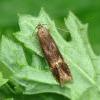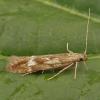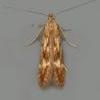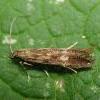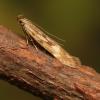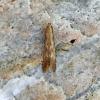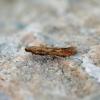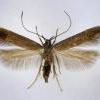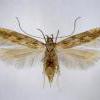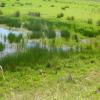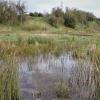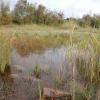35.071 Monochroa lucidella (Stephens, 1834)
Status and Distribution
Local in England and Wales, very local in Ireland, and rare in south west Scotland and the Channel Islands. Apparently absent from Isle of Man and Northern Ireland. There are some indications that it may be expanding its range slightly northwards.
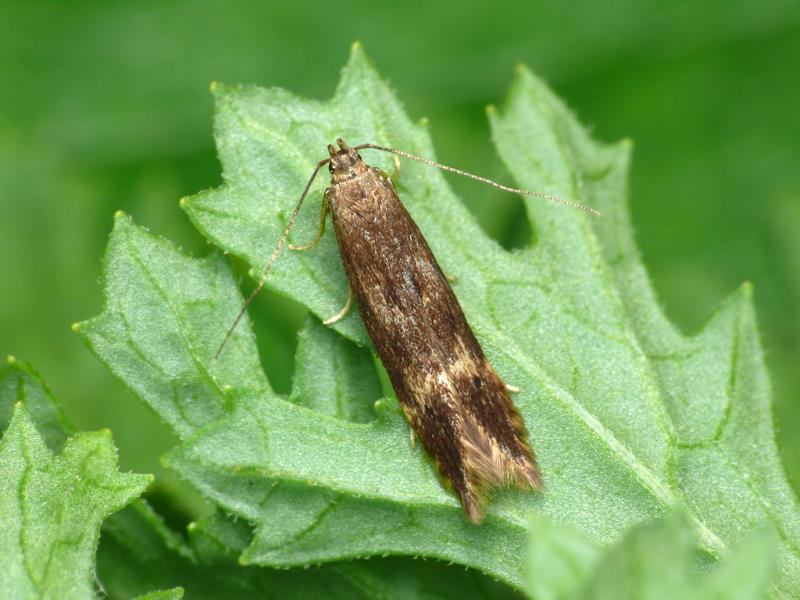
Provisional map
Foodplant and Larval Feeding Signs
Eleocharis palustris (common spike-rush), see plant distribution map.
In Europe also found on Juncus sp. (rushes), Scirpus sylvaticus (wood club-rush) and Typha spp. (reedmace).
No external signs of feeding damage.
Habitat
Finding the Moth
Larva: in the stem, with no external signs of feeding during May and June.
Adult: can be swept from amongst the foodplant, flies in the late afternoon, at night and comes to light. Occasionally wanders some distance from suitable habitat.
Similar Species
Variable in colour from ochreous white with slightly darker mottling to fuscous with little mottling. Darker forms can resemble the dark form of Monochroa lutulentella, which is larger with broader wings and the first four segments of the abdomen ochreous yellow above (fuscous in M. lucidella).
Single brooded from mid-June to early August.
Earliest: 24th May 2007 (VC24)
Latest: September 2002 (VC1)

